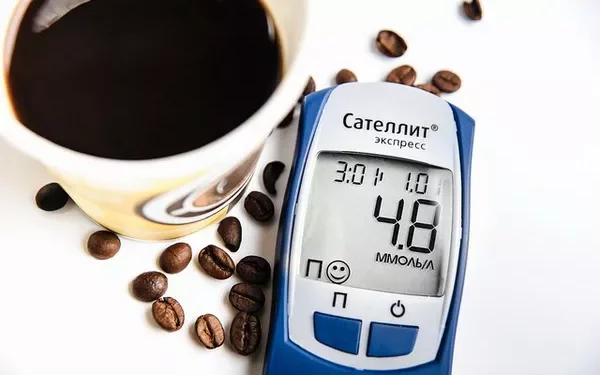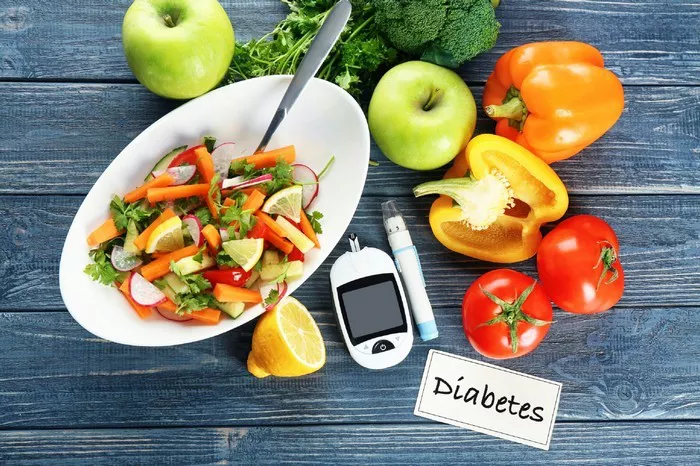Hypoglycemia, or low blood sugar, is a condition that occurs when the glucose levels in the bloodstream drop below normal. While mild hypoglycemia is a common occurrence among individuals with diabetes, especially those on insulin or certain oral medications, it can quickly become a serious and potentially life-threatening condition if not recognized and treated in time. Hypoglycemia affects the body’s ability to function normally, especially the brain, which relies heavily on glucose for energy.
In this article, we will explore when hypoglycemia becomes dangerous, the symptoms that indicate a medical emergency, and the steps individuals can take to manage and prevent severe hypoglycemic episodes.
Understanding Hypoglycemia
Glucose, or sugar, is the body’s primary source of energy, particularly for the brain and nervous system. When blood sugar levels fall too low, the body and brain cannot function properly. For most individuals, blood glucose levels are considered low when they fall below 70 mg/dL (3.9 mmol/L). However, hypoglycemia can vary in severity depending on the individual, the level of glucose in the blood, and the underlying cause.
Types of Hypoglycemia
Hypoglycemia can be classified into different categories based on its severity and the level of impairment it causes. Understanding these categories is essential to knowing when hypoglycemia becomes dangerous.
Mild Hypoglycemia: This occurs when blood sugar drops slightly below the normal range. Symptoms may include hunger, sweating, trembling, and irritability. In most cases, mild hypoglycemia can be treated by consuming fast-acting carbohydrates, such as glucose tablets or sugary foods.
Moderate Hypoglycemia: At this stage, the symptoms become more pronounced, and cognitive function may be impaired. Individuals may experience confusion, difficulty concentrating, and mood changes. While treatment is still effective at this stage, it requires prompt action to prevent further deterioration.
Severe Hypoglycemia: Severe hypoglycemia is a medical emergency. At this stage, blood sugar levels have dropped so low that the individual may lose consciousness, have seizures, or enter a coma. Immediate intervention with glucagon injections or intravenous glucose is necessary to prevent life-threatening complications.
When Is Hypoglycemia Dangerous?
Hypoglycemia can become dangerous when it progresses beyond the mild or moderate stages and leads to severe neurological impairment or systemic complications. The following are key factors that make hypoglycemia a dangerous condition:
Blood Sugar Drops Below 54 mg/dL (3.0 mmol/L)
While hypoglycemia is generally defined as blood sugar levels below 70 mg/dL (3.9 mmol/L), it becomes particularly dangerous when levels fall below 54 mg/dL (3.0 mmol/L). At this threshold, the risk of severe cognitive impairment, seizures, and loss of consciousness significantly increases. The body’s normal compensatory mechanisms, such as the release of glucagon and adrenaline to raise blood sugar, may become insufficient to restore glucose levels.
Severe Neurological Symptoms
As blood sugar levels continue to fall, the brain, which depends on glucose for energy, begins to experience severe impairment. Symptoms of dangerous hypoglycemia affecting the brain include:
Confusion and Disorientation: The individual may become disoriented, unable to think clearly, and have difficulty following conversations or performing simple tasks.
Blurred Vision: Hypoglycemia can affect vision, making it difficult to see clearly.
Slurred Speech: Speech may become slurred, similar to the effects of intoxication, as the brain struggles to coordinate motor functions.
Seizures: Severe hypoglycemia can trigger seizures, which are uncontrolled electrical disturbances in the brain.
Loss of Consciousness: In extreme cases, hypoglycemia can lead to unconsciousness or coma. This is a medical emergency and requires immediate intervention.
Hypoglycemia Unawareness
Hypoglycemia unawareness is a dangerous condition in which individuals no longer recognize the early warning signs of low blood sugar. This condition is more common in individuals who experience frequent episodes of hypoglycemia, especially those with type 1 diabetes who have had the condition for many years. As the body’s normal responses to hypoglycemia weaken, such individuals may not feel the early symptoms like hunger, sweating, or shaking. Without these warning signs, hypoglycemia can progress to dangerous levels without the individual realizing it.
Prolonged Hypoglycemia
Prolonged hypoglycemia, where blood sugar levels remain low for an extended period, can cause serious damage to the body, particularly the brain. The brain relies on glucose for energy, and when deprived of this fuel for too long, brain cells can become damaged or die. This can lead to permanent neurological impairment, cognitive deficits, or even death. Prolonged hypoglycemia is most dangerous in situations where the individual is unconscious or unable to seek help, such as during sleep.
Hypoglycemia During Sleep
Nocturnal hypoglycemia, or low blood sugar during sleep, is particularly dangerous because it may go unnoticed. The body’s natural warning signs, such as hunger or sweating, may not wake the individual, and they may continue to experience low blood sugar for hours. Nocturnal hypoglycemia can lead to:
Nightmares: Some individuals may experience vivid nightmares as a result of low blood sugar during sleep.
Waking Up in a Cold Sweat: Hypoglycemia can cause excessive sweating during sleep, which may wake the individual feeling cold and clammy.
Seizures During Sleep: Severe hypoglycemia can trigger seizures during sleep, posing a significant risk of injury or death.
Coma: In extreme cases, untreated nocturnal hypoglycemia can lead to coma and death.
Hypoglycemia in Vulnerable Populations
Certain populations are more vulnerable to the dangerous effects of hypoglycemia:
Children: Children, particularly those with type 1 diabetes, are at higher risk of severe hypoglycemia due to their smaller body size and the challenge of maintaining stable blood sugar levels. Parents and caregivers must be vigilant in monitoring blood sugar levels and recognizing the signs of hypoglycemia in children.
Elderly: Older adults may be more susceptible to the dangerous effects of hypoglycemia due to age-related changes in glucose metabolism and a reduced ability to sense low blood sugar levels. Cognitive decline and comorbidities such as cardiovascular disease can further complicate the management of hypoglycemia in this population.
Individuals with Cognitive Impairment: Those with conditions such as dementia may be less able to recognize or communicate the symptoms of hypoglycemia, increasing the risk of severe episodes.
Symptoms of Dangerous Hypoglycemia
Recognizing the symptoms of hypoglycemia is critical to preventing it from becoming dangerous. While early symptoms are manageable, they can quickly escalate if left untreated. The following symptoms indicate that hypoglycemia is progressing to a dangerous stage:
Early Symptoms
- Hunger
- Shaking or trembling
- Sweating
- Dizziness or lightheadedness
- Rapid heartbeat
- Irritability or mood changes
Severe Symptoms
- Confusion and disorientation
- Difficulty concentrating or focusing
- Blurred vision
- Slurred speech
- Clumsiness or lack of coordination
- Seizures
- Loss of consciousness
- Coma
Managing Dangerous Hypoglycemia
The key to managing hypoglycemia, especially in its dangerous stages, is early recognition and prompt treatment. Here are essential steps to take when hypoglycemia becomes dangerous:
Immediate Treatment with Fast-Acting Carbohydrates
For mild to moderate hypoglycemia, consuming 15-20 grams of fast-acting carbohydrates is the first line of treatment. Examples include:
- Glucose tablets or gels
- Sugary drinks like fruit juice or soda
- Hard candies
- Honey or sugar
After consuming fast-acting carbohydrates, blood sugar levels should be rechecked after 15 minutes. If blood sugar remains low, another dose of fast-acting carbohydrates should be taken.
Administering Glucagon
In cases of severe hypoglycemia where the individual is unconscious, having seizures, or unable to consume food, glucagon should be administered. Glucagon is a hormone that rapidly raises blood sugar levels by stimulating the liver to release stored glucose into the bloodstream. Glucagon is available in emergency kits as an injection or nasal spray, and caregivers, family members, and friends should be trained in its use.
Seeking Emergency Medical Help
Severe hypoglycemia requires immediate medical attention. If glucagon is not available or the individual does not respond to treatment, emergency services should be contacted. Intravenous glucose may be administered by healthcare professionals to quickly restore blood sugar levels.
Preventing Dangerous Hypoglycemia
Prevention is the best strategy for avoiding dangerous hypoglycemia. Here are key measures to reduce the risk of severe low blood sugar:
Monitor Blood Sugar Regularly
Frequent blood sugar monitoring is essential for individuals at risk of hypoglycemia, particularly those with diabetes. Monitoring allows for early detection of low blood sugar levels and timely intervention.
Adjust Medications
Individuals on insulin or oral diabetes medications should work closely with their healthcare provider to adjust dosages as needed. Changes in diet, physical activity, or other health conditions may require adjustments in medication to prevent hypoglycemia.
Carry Fast-Acting Carbohydrates
Always carrying fast-acting carbohydrates, such as glucose tablets, ensures that treatment is readily available if hypoglycemia occurs. This is especially important for individuals who are active or away from home.
Educate Family and Friends
Family members, caregivers, and friends should be educated about the signs and symptoms of hypoglycemia and how to respond in an emergency. Ensuring that those around you know how to use glucagon or call for emergency help can save lives.
See also: Is Reactive Hypoglycemia Serious?
Conclusion
Hypoglycemia is a condition that can range from mild to life-threatening. While mild episodes are common and manageable, hypoglycemia becomes dangerous when it leads to severe neurological impairment, seizures, loss of consciousness, or prolonged low blood sugar levels. Individuals at risk of hypoglycemia, particularly those with diabetes, must be vigilant in monitoring their blood sugar levels, recognizing the warning signs, and seeking prompt treatment to prevent dangerous complications. Educating oneself and others about hypoglycemia, carrying fast-acting carbohydrates, and having access to emergency glucagon can make the difference between a manageable situation and a medical emergency.
Related topics:
What Else Can Cause Hypoglycemia Symptoms?

























